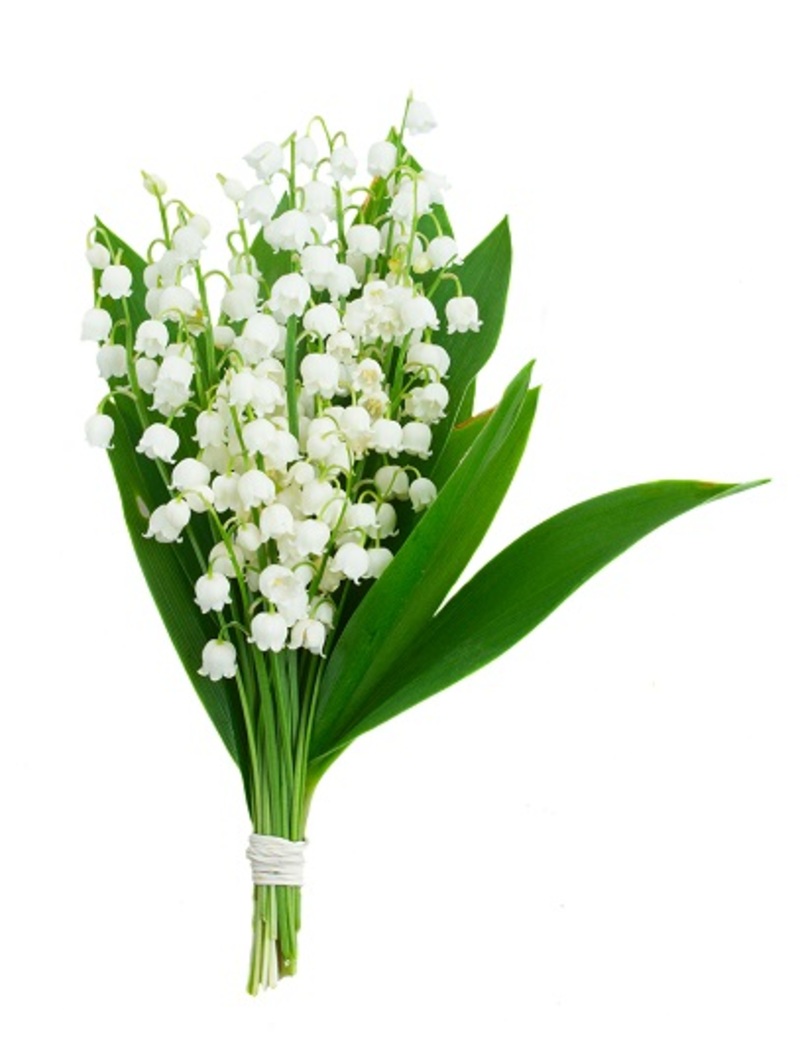Learn the Art of Prolonging Cut Flower Freshness
Posted on 07/09/2025
Learn the Art of Prolonging Cut Flower Freshness
Cut flowers bring beauty and color, transforming any room with their vibrant presence. Yet, their ephemeral nature often leaves us longing to enjoy their loveliness just a little longer. Learning the art of prolonging cut flower freshness is more than simply putting blooms in water--it's about understanding care, environment, and smart techniques that extend their lifespan. In this comprehensive guide, you'll discover effective, evidence-backed methods to keep your cut flowers looking fresh and fabulous for days (even weeks) longer.

Why Do Cut Flowers Wilt So Fast?
Cut flowers begin to fade the moment they're separated from their roots. The primary reasons include:
- Water Loss: Without roots, flowers can't absorb enough water to stay hydrated and plump.
- Bacteria Growth: Stagnant water in vases becomes a breeding ground for bacteria, which can clog stems and speed up wilting.
- Lack of Nutrients: Detachment from the mother plant cuts off essential nutrients flowers need for longevity.
- Ethylene Gas: Many flowers emit this natural aging hormone, which hastens petal drop and decay.
- Temperature Fluctuations: Heat speeds up the deterioration process, causing flowers to wilt and shrivel more quickly.
Fortunately, you can counteract these issues with strategic care, prolonging the freshness of your cut flower arrangements significantly.
Choosing the Freshest Blooms: The First Step
Prolonging vase life begins with your choice of flowers. Whether you're picking from your own garden or purchasing from a florist, follow these tips for selecting the freshest blooms:
- Look for Tight Buds: Pick flowers that are just starting to open. These last longer than fully open blooms.
- Inspect Stems: Avoid any stems that feel slimy or appear discolored.
- Check Petals: Healthy, firm petals free from spots and browning signal freshness.
- Examine Leaves: Leaves should be green and unblemished, not yellowing or wilting.
*Pro tip:* If possible, buy your flowers in the morning when they're newly delivered and haven't been sitting out all day.
Prepare Flowers Properly for Maximum Freshness
1. Trim Stems Correctly
Always trim at an angle. Cut each stem at a 45-degree angle with sharp, clean scissors or pruning shears. This exposes more surface area for water absorption and prevents stems from resting flat at the base of the vase, which can impede water uptake.
Why it matters: Freshly cut stems open up blocked vessels and allow immediate hydration.
2. Remove Lower Leaves
Leaves that sit in water are susceptible to rotting, which promotes bacterial growth. Remove all foliage that would be submerged in the vase water before arranging your bouquet.
3. Use Clean Vases
Dirt and bacteria in a vase can quickly spoil your blooms. Always wash your vase thoroughly with soap and hot water, or run it through the dishwasher.
- Consider using a diluted bleach solution (1 part bleach to 10 parts water) for extra sanitization before rinsing thoroughly.
The Right Water and Flower Food
Water Quality Makes a Difference
Start with clean, room-temperature water. If your water is very hard or heavily chlorinated, consider using filtered or distilled water for sensitive flower varieties. Some florists even swear by adding a few ice cubes to keep the temperature low and delay wilting.
Why Use Commercial Flower Food?
Most bouquets come with a packet of flower preservative. Don't throw it away! This formula contains:
- Sugar: Nourishes the flowers.
- Acidifier: Balances pH for optimal water uptake.
- Bactericide: Reduces harmful microbes.
Dissolve the full packet in your water as directed. Commercial flower food is specifically designed to prolong cut flower life.
Homemade Alternatives to Flower Food
If you're out of commercial flower food, you can make your own. Combine:
- 1 teaspoon of sugar (for nourishment)
- 2 teaspoons of lemon or lime juice (acidifier)
- 1/2 teaspoon bleach (to deter bacteria)
- Add to 1 quart of lukewarm water and mix well.
Note: While homemade solutions work in a pinch, commercial products are typically more effective.
Arrangement Location: Where to Showcase Your Flowers
Once arranged, where you place your bouquet is just as important as preparation. For optimum cut flower longevity, remember:
- Keep out of direct sunlight. Too much sun fades and dries blooms quickly.
- Avoid heat sources. Do not place vases near heaters, appliances, or electronics that emit warmth.
- Steer clear of drafts. Cold bursts or air-conditioning can dehydrate petals rapidly.
- Separate from ripening fruits. Fruits emit ethylene gas, the enemy of fresh flowers.
Treat your flowers like you would fresh produce: keep them cool, shaded, and away from gassy neighbors!
Daily Maintenance: Habits to Prolong Freshness
Even with the perfect setup, daily care is crucial for prolonging cut flower freshness:
- Change the water daily or every other day to prevent bacterial buildup.
- Trim 1/2 inch off the stems every two days to open up water passageways.
- Promptly remove wilted or dying blooms to prevent ethylene from accelerating other flowers' decline.
- Add fresh flower food each time you change the water.
Commit to these habits and watch your arrangement stay livelier, longer.
Special Care for Different Flower Types
Some flowers have unique needs that, when met, can extend vase life. Here are a few guidelines for popular varieties:
Roses
- Prone to "Bent Neck": Immediately remove packaging and re-cut stems under water to prevent air bubbles. Remove all leaves that would be submerged.
- Keep cool and away from drafts or heat.
Lilies
- Careful with Pollen: Remove stamens to prevent pollen stains on petals and your home.
- Remove yellowing petals and leaves regularly.
Tulips
- Tend to "Grow" in Vase: Re-cut frequently to maintain a uniform appearance.
- Cool water prolongs bloom time.
Daffodils
- Secrete a Sticky Sap: Keep separate from other flowers for the first few hours after trimming; the sap can be toxic to others.
- Change water often.
Hydrangeas
- Wilt Quickly: Dunk heads in cool water for 15-30 minutes if they start to droop.
- Mist regularly to keep petals hydrated.
Unique Tricks to Prolong Cut Flower Freshness
Besides the basics, some clever hacks can help boost the longevity of your bouquet. Give these methods a try:
- Aspirin: Crush one tablet and add to your vase water. Some florists say its salicylic acid can slow bacterial growth and enhance water flow.
- Vodka: Add a few drops; alcohol acts as an antibacterial agent and ethylene inhibitor.
- Apple Cider Vinegar & Sugar: A tablespoon of each can nourish flowers and reduce bacteria.
- Copper Coins or Pennies: The copper's antimicrobial properties can help keep water cleaner (best for tulips and daffodils).
- Hairspray: A light mist on petals (from a distance) can help preserve color and shape--great for short-lived blooms.
Note: Test these tricks on a small bouquet before using them on your most precious arrangements.
Common Mistakes That Shorten Flower Life
While learning how to keep cut flowers fresh, avoid these frequent pitfalls:
- Using dirty, bacteria-laden vases.
- Letting leaves sit underwater.
- Placing bouquets near fruit bowls.
- Overcrowding stems, reducing airflow and water absorption.
- Failing to change water often.
Avoiding these errors makes a significant difference in prolonging the freshness of your cut flowers.

Prolonging Cut Flower Freshness: Frequently Asked Questions
How long do cut flowers typically last?
With proper care, most cut flowers last 7-10 days. Some, like chrysanthemums, carnations, and alstroemeria, can last up to two weeks or more.
Is cold water or warm water better for cut flowers?
Room-temperature water is best for most cut flowers. For bulb flowers (tulips, daffodils), slightly colder water helps prolong freshness.
Can I refrigerate my flowers overnight?
Yes, placing cut flowers in the refrigerator overnight (away from fruits/vegetables) can significantly extend their freshness--this replicates optimal florist storage methods.
Is bleach safe for all flowers?
Bleach in very low concentration (never more than 1/2 teaspoon per quart of water) is safe for most flowers and helps prevent bacterial growth. Avoid in cases of delicate or highly sensitive blooms.
Conclusion: Celebrate Longer-Lasting Floral Beauty
Learning how to keep cut flowers fresh is a rewarding art that allows you to savor nature's fleeting beauty for as long as possible. From careful selection and preparation to daily maintenance and unique preservation tricks, prolonging the freshness of cut flowers involves a blend of knowledge, discipline, and creativity. Adopt these professional florist secrets in your floral care routine, and enjoy vibrant, fragrant bouquets that brighten your home much longer.
With just a bit of extra care, your flowers can tell their beautiful story for days--and even weeks--after being cut.
Latest Posts
Our Experience: Transforming a [NEIGHBOURHOOD/POSTCODE] Space with Flowers
Top 10 Parks in [AREA] for Stunning Flower Displays in Spring 2024
Learn the Art of Prolonging Cut Flower Freshness
From Bud to Bloom: 8 Fascinating Sunflower Facts
Peony Flowers: An Odyssey of Symbolism and the Colors They Wear






